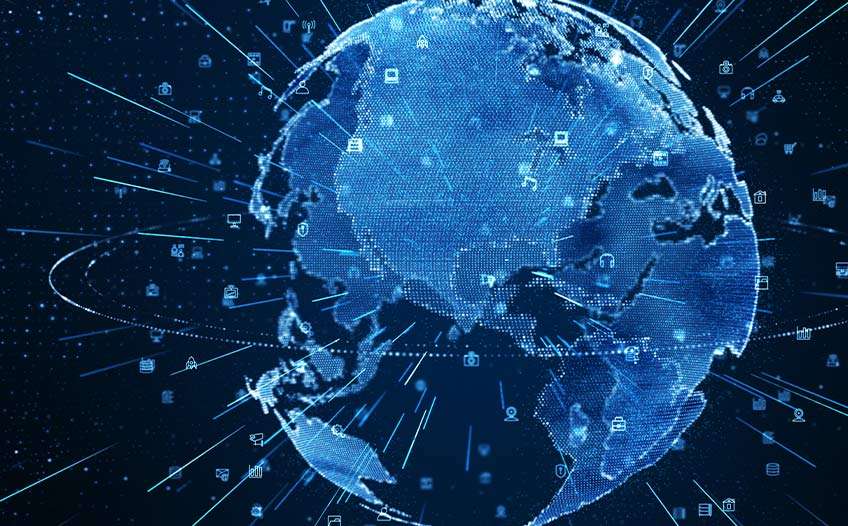- Blog
- The ultimate guide to RPA lifecycle deployment
The ultimate guide to RPA lifecycle deployment

Amid the rush to automate, countless businesses in the infancy of their RPA journey are no doubt trying to get their heads around one question – ‘How are bots actually built?’ While different organisations may provide different responses when it comes to the specifics, implementing an RPA robot generally features a different few stages, each with its own beginning and end. Commonly referred to as RPA Lifecycle, the path from Discovery to Execution is one that can prove game-changing for those businesses that choose to walk it.
RPA Lifecycle

Discovery Phase
The RPA Lifecycle begins with a dedicated focus on process improvement (PI), with consulting teams working with clients to analyse their requirements and identify potential solutions to make their operations more efficient and cost-effective. RPA is just one of the tools that fall under the PI umbrella so, rather than thinking solely about automation, the initial step is all about exploring the art of possibilities to improve a process. Should an opportunity for RPA be identified, the RPA architect team will then assess the possibility in light of everything else that was ‘discovered’ during the Discovery Phase.
Solution Design Phase
It is now time to design the solution or steps needed to automate a task, with the Technical Architect and Process Architect joining forces to create a Process Definition Document (PDD). This crucial document contains detailed information about each process/step and will be used by the developer as the basis from which to design the automated solution. Upon completion of the PDD, the focus turns to deciding key requirements such as budget and the amount of time and number of people to dedicate to the project. The analyst team can then create an Object Model Diagram to better understand the flow of processes and ultimately help choose the right processes for automation.
Another crucial part of this phase is Business Case Approval, which can be challenging given the high-level stakeholders involved. By this stage, mid-level managers will have identified that RPA is an attractive option but it is now necessary to convince senior executives such as CFOs and COOs of the same and experienced consultants will help quantify the benefits versus costs. With executive backing, it is then a matter of identifying the best RPA Tool to automate the task so the team can get to work developing the bot.
Development Phase
There are a huge number of RPA Tools in today’s market, including UiPath, Blue Prism and Automation Anywhere, and the Development Phase sees the Automation Developer create automation scripts/bots in the chosen one. This is done by referring to the PDD and will require different levels of coding depending on the automated tasks.
User Acceptance Test (UAT)
With the development of the bot completed, now comes the crucial testing phase. Widely known as UAT, this phase sees the RPA Development team or a dedicated Testing team test the bot in a pre-production environment and deliver feedback on how it performs in automating a task. The ideal result is the testing is successful and it is onward and upward to the next phase. Of course, that does not always happen, with a testing failure seeing the bot transferred back to the Development Phase where developers can examine and solve the errors that were identified.
Deployment and Maintenance Phase
Bot developed – tick. Bot successfully tested – tick. It is now time for arguably the most satisfying moment of the RPA lifecycle – deployment. Deploying the bot into the production environment allows users to finally see their tasks automated and enjoy the benefit of being able to spend more time on higher-value work. In every deployment, the development team will keep special attention to the bots for a period known as hypercare where any potential scenario missing in the UAT can happen and will require immediate intervention. The duration of hypercare depends on process complexity but can take anywhere from a few days to weeks. It is critical to keep an eye on the bot’s ongoing performance though and if any issues do arise, it is returned to the Development and Testing teams for analysis and resolution.
Execute Bots
With the hard work done, the final phase of the RPA Lifecycle is somewhat short but oh-so-sweet. It involves the execution of the bots, with regular checks to ensure the implementation is continuing to perform as required and meaningful results are being delivered.
Summary
As is evident from the RPA Lifecycle, committing to an RPA project is no small undertaking. It takes time, money and emotional investment from all involved. However, the pros far outweigh the cons, which is why so many businesses return to the Discovery Phase so soon after executing their initial bots.
Learn more about how to set RPA projects up for success.

.jpg)
